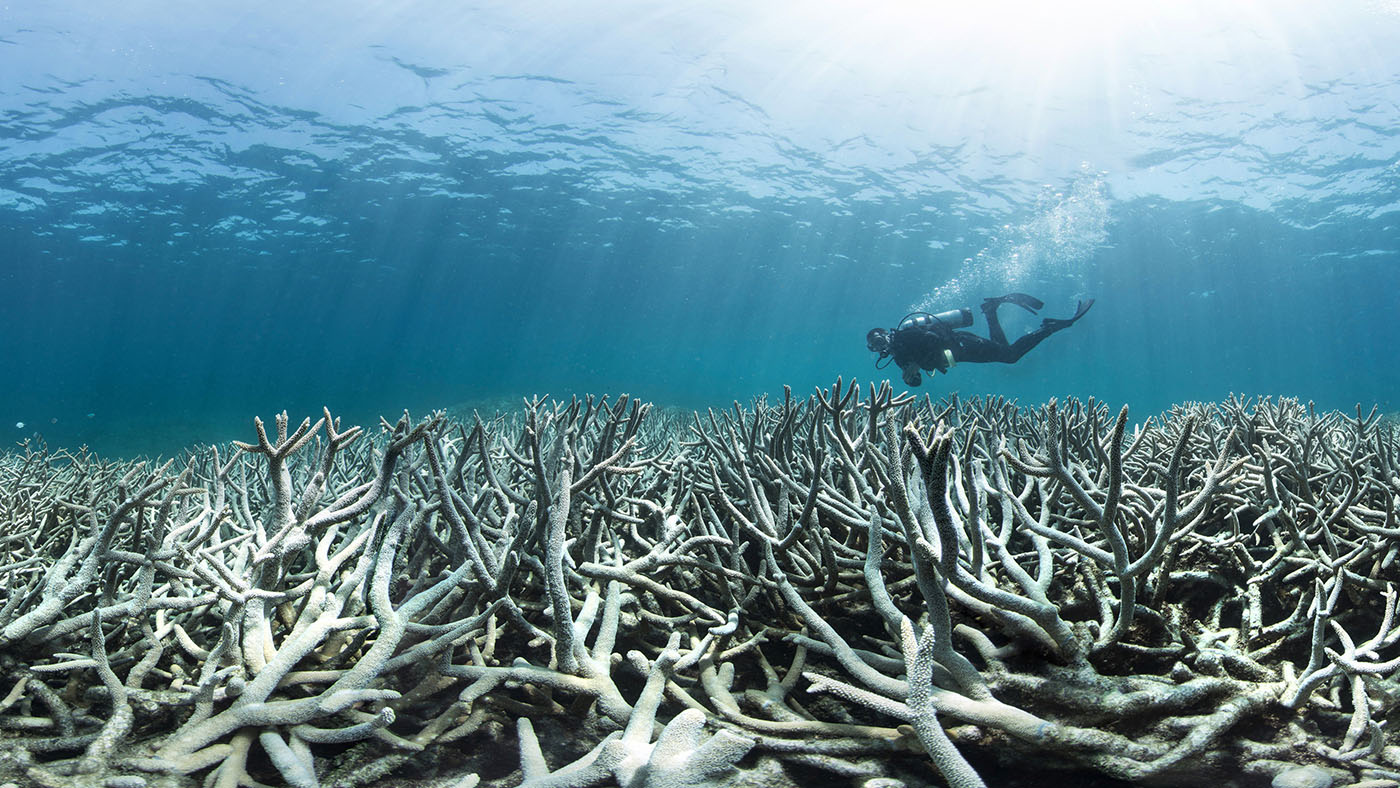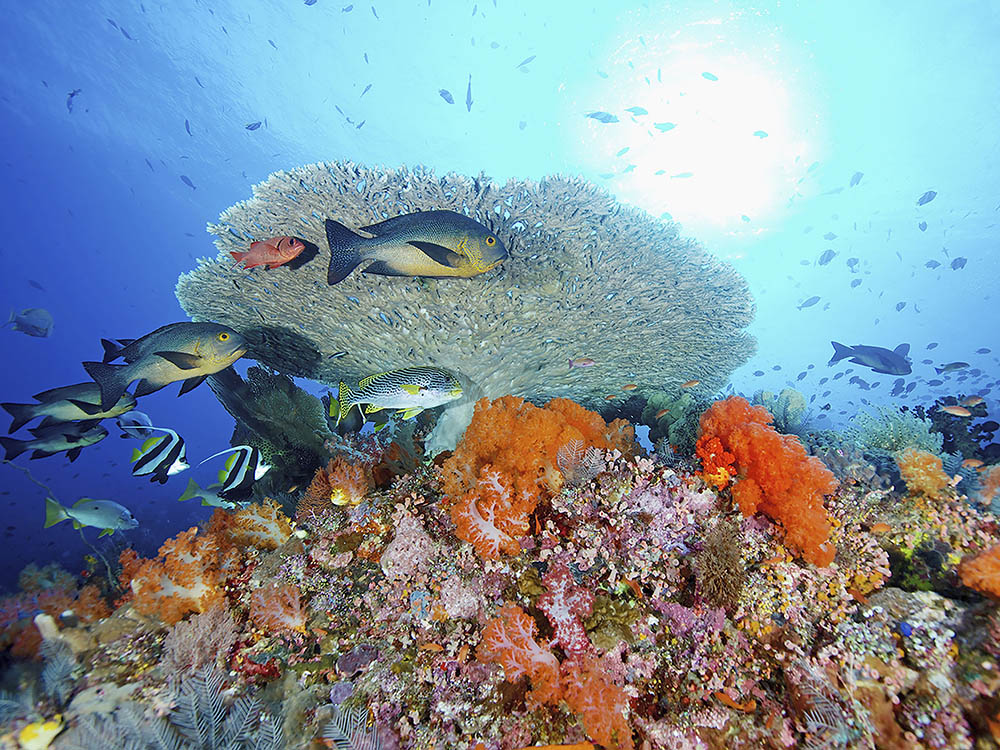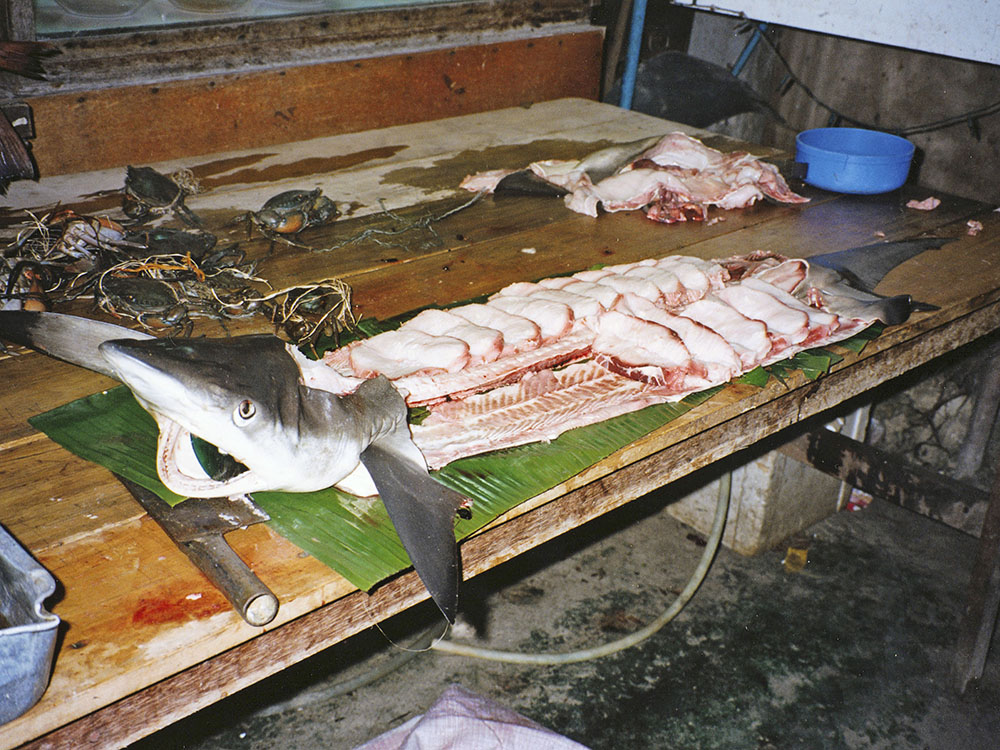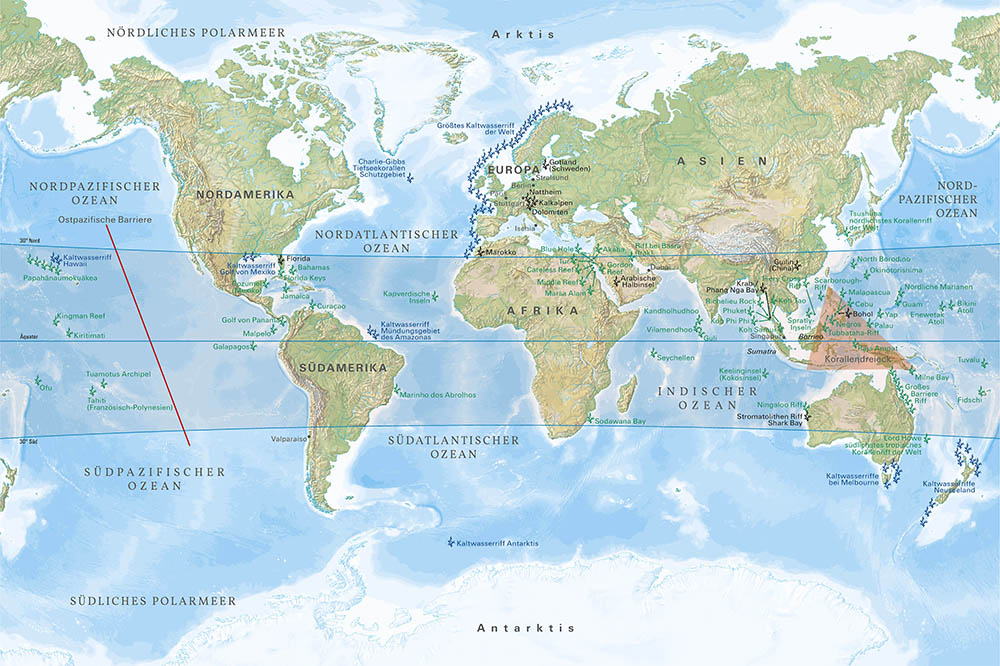
© The Ocean Agency
Coral Reefs in Crisis
Coral reefs are in danger around the world and the causes are diverse. However, there is hope.
Climate change, overfishing, and ocean pollution: These factors contribute immensely to the fact that less than 30 percent of the global coral reefs are in a good condition. In this article, you can find out more about the significance and endangerment of these ecosystems. These topics will also be the main focus of the 14th and 15th International Coral Reef Symposia, which are currently being organized by the University of Bremen.
Together with his Marine Ecology working group, Christian Wild has been dealing with this sensitive ecosystem at the University of Bremen for several years. “The current numbers portray a dramatic situation,” says the scientist. In 2016, around 30 percent of the stony corals along the Australian Great Barrier Reef were victims of the most recent large case of coral bleaching. Shortly before the COVID-19 pandemic broke out in February/March 2020, the stony corals of the southern part of Great Barrier Reef, which had up to that point had remained protected from coral death, suffered widespread bleaching. That was when the dangerous situation became critical for the reef, which is the largest in the world with its 2,600 kilometers, according to Wild. “Globally, 30 percent of our coral reefs have disappeared, 40 percent are in grave danger, and only 30 percent remain in a comparably good condition.”
CO2 Emissions Are Biggest Threat
Coral death has both global and local causes. “The most dangerous global threat for the existence of coral reefs is the CO₂ emissions produced mainly by the industrial countries, which are also responsible for climate change,” explains Wild. The sensitive ecosystems are doubly damaged by the greenhouse gases. On the one hand, stony corals and the algae living in symbiosis are extremely sensitive to temperature. An elevation of 1.5 degrees – the current Paris climate agreement target – is the upper threshold for the survival of many species. “At the same time, there is a so-called acidification of the seawater, as the oceans take in the CO₂ from the atmosphere,” according to Wild. This impairs the creation of stable reef structures with calcium from the corals. The consequences would be fatal for coastal protection as intact coral reefs reduce 97 percent of the wave energy and 84 percent of wave height. “The destructive power of storm tides is reduced by 50 percent. More than 100 countries would be directly affected and would lose their coastal protection.”

© The Ocean Agency / Gregory Piper
500 Million People Depend on Coral reefs
“Coastal protection is only one of the ecosystem services that we can thank intact coral reefs for,” explains Dr. Sebastian Ferse. Ferse works at the Leibniz Centre for Tropical Marine Research (ZMT) and cooperates with the University of Bremen. He is a member of the 14th and 15th ICRS organizational committee. Around 500 million people in the tropics are directly or indirectly economically dependent on the coral reefs. The value of the services are estimated as being around 100 trillion US dollars per year. The reefs are the most significant earth ecosystems by far. A good example is the tourism industry. Each year, two million people visit the Great Barrier Reef on Australia’s east coast. Reef tourism contributes around 6.4 billion euros to Australia’s economy each year.
Roughly 70,000 people have their job due to the Great Barrier Reef. In many other developing countries, such as Egypt, the tourism industry plays an even bigger role.The contribution to the diet of the locals is even more important. Fish is a healthy source of protein and is often the only source on tropical islands and in coastal areas that is available in large enough quantities and is reasonably priced. Around one billion people depend on protein from coastal fishing. “However, coral reefs are being extremely overfished,” according to Ferse. The result: More than half of the normal biomass of 83 percent of fished coral reefs has disappeared.
The intense use of areas close to the coast is also a factor. Reefs are put under strain by hotels, ports, and other tourism infrastructures. The clearing of tropical rainforests, raw material extraction in mines, and diverse other construction measures cause strong sediment deposits via wind, rain, and rivers. Additionally, a great deal of waste is entering the oceans. Agriculture and aquacultures promote extreme algae growth due to over fertilization and allow pesticides to the enter the ocean. As a result, the oxygen content sinks and the corals suffocate. “These local threats can be as dangerous for coral reefs as the global ones,” explains Wild. The situation is made worse by the demographic change. The Philippines as an example: Around 1900, around 10 million people lived on the tropical island archipelago. Nowadays, 100 million people require work, living space, and food. The pressure on all ecosystems is increasing.
Local Threats Can Be Influenced Well
Currently, it can be said that local threats have been responsible for the destruction of the majority of coral reefs in the past decades. “This sounds negative at first but definitely has a positive side”, explains Ferse. Local threats can be influenced more easily. Measures such as construction prohibitions, protection zones, and fishing management can generate quick success and lead to a rejuvenation of the ecosystems. In order to achieve this, only a few local players have to be convinced. In contrast to this, the CO₂ emissions are far more difficult to control as international agreements are needed for this.

© Heinz Krimmer / ICRS
Largest Cold Water Reef on the Plant in Northern Europe
It can be seen in Europe, however, how difficult it can still sometimes be to contain local threats: The largest cold water reef on the planet spans from the northern Norwegian coast towards the south from a depth of around 200 meters. Trawl fishery is just as dangerous for these deep sea reefs as blast fishing is in the tropics. Only a ruin remains once it has been done. Many deep sea reefs were probably destroyed before they were even discovered. Despite all of this, trawl fishery is still permitted in unprotected areas. Cold water corals can be found across the world and mainly grow in the dark deep sea. In contrast, tropical coral reefs prefer shallow water that is flooded with light and is located between latitude of 30 degrees north and south. These regions are called the “deserts of the sea” as they are very nutrient-poor. It was for this reason that marine biologists were not able to explain for a very long time why it is possible for stony corals to create gigantic reef complexes in these “deserts”. Where do they get the energy to nourish themselves and additionally produce masses of calcium – so-called primary production? This reef paradox or Darwin paradox as it is also called was only able to be clarified in the last years. The discovery of how stony corals obtain nitrogen that is crucial for their survival was an important step.

© Heinz Krimmer / Kosmos Verlag
Research at the University of Bremen
Christian Wild’s Marine Ecology unit has been working on how stony corals influence nitrogen cycles for several years. Currently, Dr. Yusuf C. El-Khaled is researching the effects of climate change on the nitrogen cycle in coral reef systems.A significant consequence of the coral reefs’ high primary production in these nutrient-poor zones is its unbelievable biodiversity. Despite coral reefs only existing on 0.2 percent of the earth’s ocean surface, more than a third of all fish and ocean invertebrates live there. This diversity makes the reefs interesting in the search for new medical agents. The reefs are called the “pharmacy of the future”. There are currently 13 drugs with agents from tropical reefs. Numerous agents, especially in the field of cancer therapy, are currently going through the approval process. This usage is not damaging to the reefs. Once they have been discovered, the agents are synthetically produced in laboratories with the help of biotechnological processes.What is certain is that coral reefs are some of the most significant ecosystems and their protection should be of a high priority. The majority of intact reefs can be found in areas that are difficult to access for humans or in protected areas. “Strictly protected national marine parks are currently the most effective measures for protecting these ecosystems against overexploitation and for stopping species extinction,” according to Wild.
Threats to Tropical Coral Reefs
It seems that protected reefs are more resistant against climate change effects than those that are subject to human influences. However, further scientific investigations are required. Wild’s working group is also working within this field. The PhD student Anna Koester is investigating the effects of climate change on the coral reefs of the Aldabra atoll in the Seychelles, which have been left mainly untouched by humans.
However global warming and ocean acidification are the biggest threats for tropical coral reefs in the future. “Only when the target of sustainably reducing the emission of climate-damaging greenhouse gases has been attained, will it be possible to limit the damage to the tropical coral reefs,” according to Wild. Maybe some of the magnificence of the coral reefs can be saved, as climate change has very different effects locally. This is due to geological or physical surroundings that strengthen or ease the effects. Some stony corals are also more resilient and adaptable than others.
All of these matters and also solutions to alleviate the worldwide coral reef crisis will be addressed as part of the 14th and 15th International Coral Reef Symposia (ICRS), which will take place virtually this year and in person in 2022 and are being organized by the University of Bremen.
Further Information:
In this up2date. article, you can find out more about the current International Coral Reef Symposium in Bremen (ICRS).